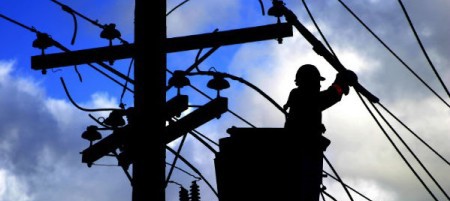Electricity systems in the United States are so haphazardly regulated for reliability, it’s nearly impossible for customers to know their true risk of losing service in a major storm, a Johns Hopkins University analysis found.
Though weather-related outages have risen over the last decade, and research shows extreme weather events will occur with more intensity and frequency in the future, power providers do not necessarily have to report storm-related outages, leaving customers with an incomplete picture of the system’s reliability and potentially limiting efforts to improve system reliability, researchers concluded in a paper published today in the journal Risk Analysis.
“Is a power outage due to a…weather event any less disruptive to a customer than an outage due to a technical failure of a substation? We would argue no,” said lead author Roshanak Nateghi, a post-doctoral fellow in the Department of Geography and Environmental Engineering in the Whiting School of Engineering. “A lost power event is a lost power event if you are a customer…. Utilities need to ensure that appropriate measures are taken to protect their systems and mitigate the impacts of disasters.”
Because the nation relies so heavily on its electric power system, the researchers wanted to evaluate the standards enacted to measure its reliability. They found there are no national laws or regulations mandating the acceptable frequency and duration of outages for power distribution systems — it’s left to individual states. And the states, they found, didn’t even agree on the definition of “reliability.”
The researchers found several key problems with this mishmash of standards.
First, in assessing a utility’s reliability, regulators didn’t typically count power outages caused by major storms — storms like Hurricane Sandy or the derecho that hit the northeast in 2012 and caused millions to lose power.
If storm-related outages aren’t counted, even if severe, a utility would have reduced incentive to fix the infrastructure to prepare for future bad weather.
Second, many utilities only report regional outage averages, which might mask what’s really happening with outages in certain areas. A region’s average might look good, even if there are pockets of consistently poor service, which is common in rural areas.
Lastly, no one was regulating vegetation maintenance, although downed trees are the second-highest cause of power outages.
The researchers concluded that existing standards don’t provide a sufficient incentive for utilities to ensure reliable service for customers, particularly during major storms.
“When the power goes off during a storm, a power company might get grief but in the end, people forget and we go back to business as usual,” Nateghi said. “If the appropriate reliability standards for handling the impacts of extreme events are not put in place, we may face a more highly stressed grid in the future.”
Reference(s):
Publication: Roshanak Nateghi, Seth D. Guikema, Yue Grace Wu, C. Bayan Bruss. Critical Assessment of the Foundations of Power Transmission and Distribution Reliability Metrics and Standards. Risk Analysis, 2015
Story: Who’s Making Sure the Power Stays On? | Johns Hopkins University — May 27, 2015
















Comments